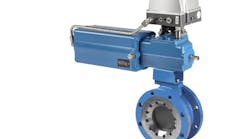Often it helps to walk around and observe people at work. I once observed an operator get up, walk around his desk, put a controller in manual, open the control valve fully for about 30 seconds and then return it to its previous position before putting the controller back into automatic. This was so strange that I asked why he did it.
The operator explained that impurities in the raw material tend to plug that valve over time and cause problems. In response, the operators open the valve fully for a few seconds every shift to clear the valve of the impurities and reduce the chance of plugging. This solution apparently worked quite well.
However, this is a relatively poor solution from an engineer’s perspective because the operator is repeatedly distracted from the process by a detail that adds little value to the operation. A better solution would be to install a valve that did not accumulate the impurities, mitigating the need for this activity.
Investigation revealed that the control valve was a globe valve. It was theorized that the impurities collected within the valve until it was fully opened (manually), at which time they would flow downstream. A segmented ball control valve was deemed to be superior in this application because if buildup occurred, the ball valve would automatically open a bit more and allow the impurities to flow downstream.
This may sound like the ending to a fairy tale, but after a segmented ball valve was installed, the control loop operated happily ever after.
David W. Spitzer is a regular contributor to Flow Control magazine and a principal in Spitzer and Boyes LLC, which offers engineering, seminars, strategic, marketing consulting, distribution consulting and expert witness services for manufacturing and automation companies. Spitzer and Boyes is also the publisher of the Industrial Automation INSIDER. He has more than 40 years of experience and has written more than 10 books and 350 articles about flow measurement, instrumentation and process control.
Spitzer may be reached at 845-623-1830 or via spitzerandboyes.com. Click on the “Products” tab to find his Consumer Guides to various flow and level measurement technologies.



